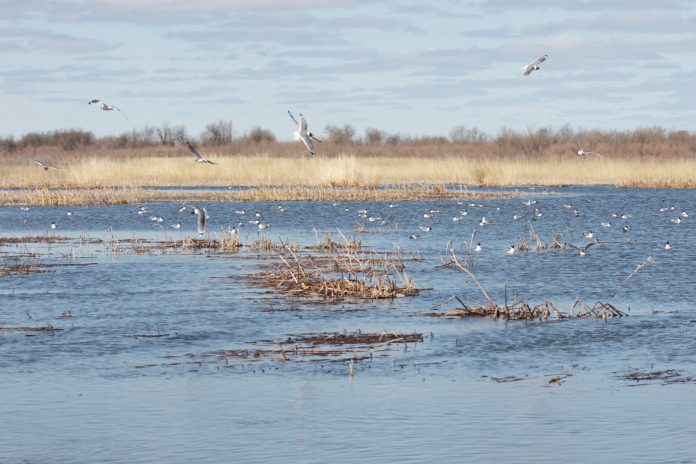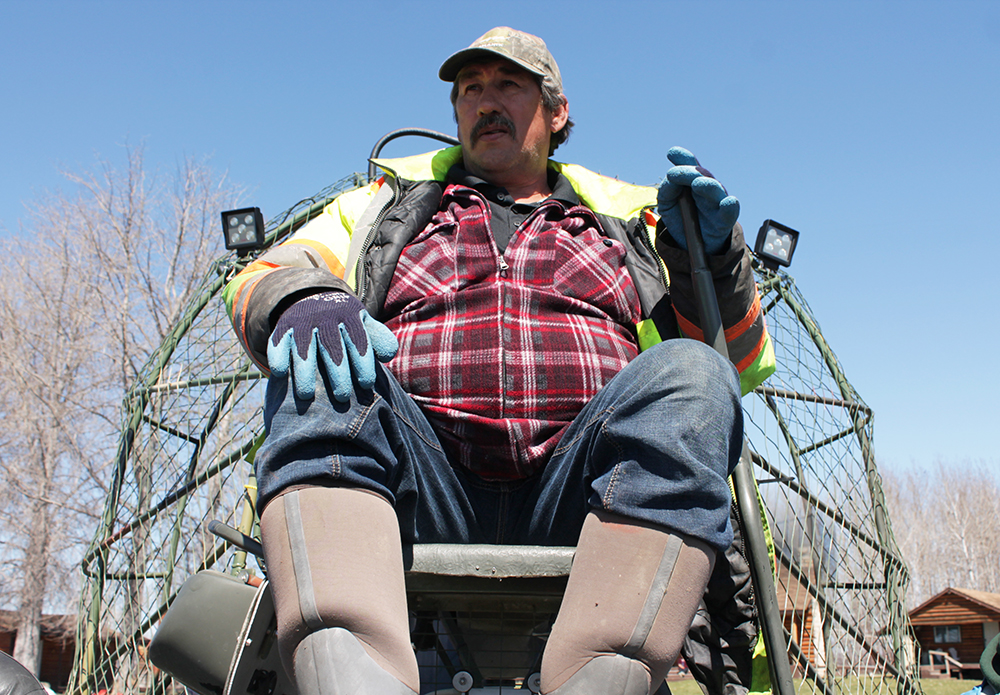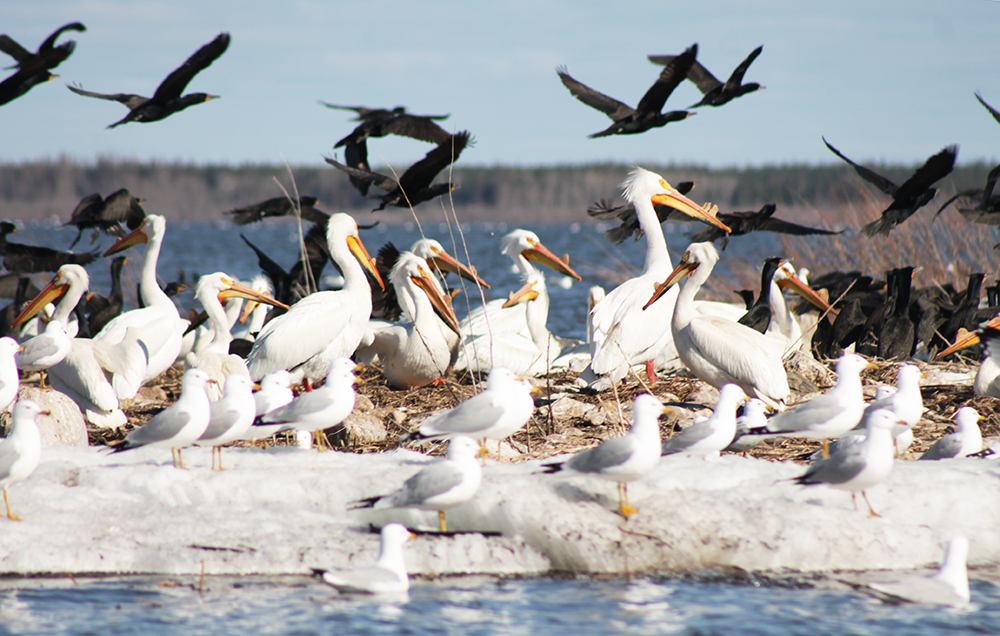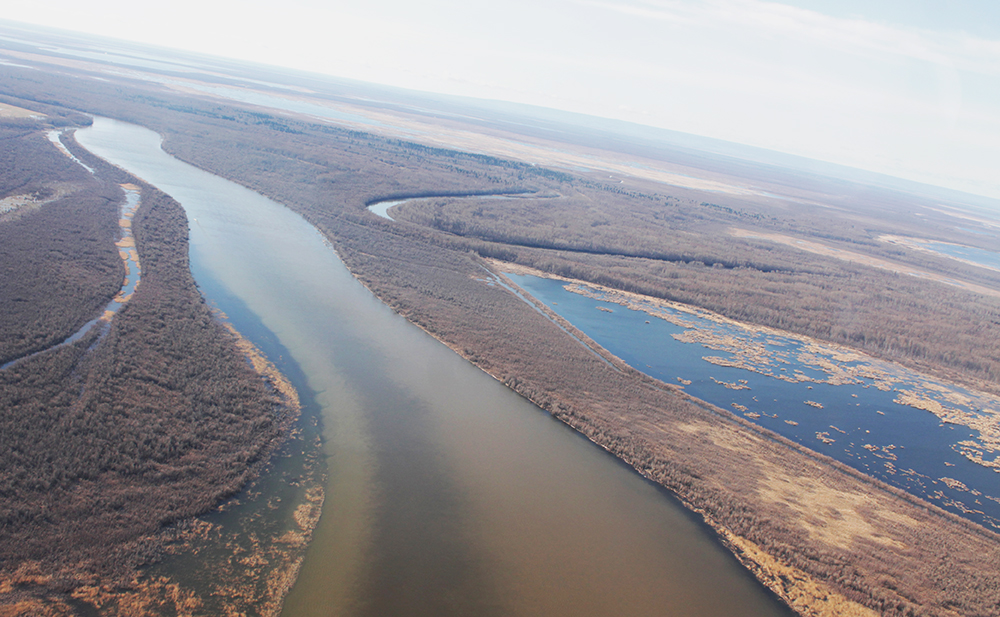
Steamboats once chugged along the Big Stone River, carrying provisions up to Cumberland House. That was long ago, before Gary Carriere’s time. Now, most years, the waters are barely deep enough for his skiff.
“That’s where I used to swim when I was a kid,” the outfitter and former village councillor says, pointing to a tree line in the distance.
“There was a natural little spot, a big flat rock, and we’d dive off of that,” he remembers. “But now it’s about 300 yards high and dry.”
Carriere helped his grandfather trap around these waters on the Mossy River Plain, part of the Saskatchewan River Delta – by some measures the largest inland water delta in North America. They caught beaver, mink, otter, wolves, coyotes, lynx, marten, fisher, muskrat. Almost fifty years later, some of those animals are hard to find.
“The delta is not the delta it used to be,” he says. “You are very lucky to see a muskrat out there.”
The wetlands here have shrunk and dried. Marshlands are cut off from the river, suffocating fish in oxygen-starved waters. The E.B. Campbell dam, about 75 kilometres upriver, blocks sediments that once rejuvenated the soils.
It’s a threat to the species Carriere depends on, and to his centuries-old way of life.
“Everybody was a trapper or a fisherman,” he says. “Today you can’t do it. The only people who still do it are the diehards who have it in the blood.”
For the past three years, an unlikely alliance of conservationists and forestry workers have been hatching a plan to help save the Mossy River Plain. Just last month, they submitted a proposal to the Ministry of Environment, seeking to declare it an ecological reserve. Combined with the nearby Seager Wheeler representative area, it would encompass a 3,850 square kilometre expanse of mostly fen, bog and marshland – becoming the largest protected area in Saskatchewan.
Gord Vaadeland of the Canadian Parks and Wilderness Society (CPAWS) is leading the push, along with Weyerhaeuser forestry. He says the designation is “the highest level of protection that the Saskatchewan Parks Act can give.”
“It would essentially mean that the area would be off limits to industrial development, but it would still allow for local traditional uses – hunting, fishing, trapping,” he says.
Above all, Vaadeland hopes, the move will alert the public to a vital ecosystem at risk.
“Once it has that recognition and people start to know about it,” he says, “it’s going to be a lot more front of mind for people to protect it.”
The plan is now winding its way through the ministry, which will make the final decision. Vaadeland says he’s heard good signals. Environment Minister Scott Moe, in Prince Albert Friday for a dinner with CPAWS staff, says there were discussions about the proposal that very day.
“It’s an important conversation to be having, not just about the value of the delta, not just about what it can offer and why we should preserve it, but the discussion on how we do that,” the minister says.
“The delta is an important and somewhat unique area, and it’s one that we need to pay attention to.”
For more on this story, see the May 16 print or e-edition of the Daily Herald.
More photos from the trip:




